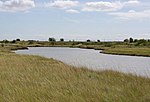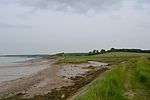Paglesham

Paglesham is a village and civil parish in the north east of the Rochford Rural District, Essex. The parish includes two hamlets of Eastend and Churchend, which are situated near the River Crouch and Paglesham Creek. It is part of the Roach Valley Conservation Zone. At the Eastend is The Plough and Sail Public House. There is an unmade road (Waterside Road) full of large potholes leading to a boatyard on the River Roach. There are a small number of houses. At Churchend is St Peter's Church. There are a small number of houses and a farm. The Punch Bowl Inn is closed but poised to reopen in the Summer of 2022. The two hamlets form one of Essex's oldest fishing villages and the area was once renowned as a smuggling centre. This included being home to one of the more famous smugglers in the region, Hard Apple, who was actually the parish councillor and local constable William Blyth.Admiralty records show that the celebrated vessel HMS Beagle, in which Charles Darwin circumnavigated the world, ended its days as a static ship in the river near Paglesham Eastend, guarding against smugglers. It is speculated that the keel of the vessel may yet survive, buried in the mud of the riverbank. Paglesham was also an old civil parish, connected to Rochford.
Excerpt from the Wikipedia article Paglesham (License: CC BY-SA 3.0, Authors, Images).Paglesham
Paglesham Road, Essex
Geographical coordinates (GPS) Address Nearby Places Show on map
Geographical coordinates (GPS)
| Latitude | Longitude |
|---|---|
| N 51.597068 ° | E 0.790071 ° |
Address
Paglesham Road
Paglesham Road
SS4 2DZ Essex, Paglesham
England, United Kingdom
Open on Google Maps









